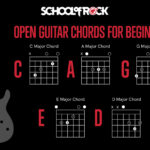The captivating sounds of Indian music have long fascinated guitarists seeking to expand their sonic palettes. Among the most intriguing elements is the use of unique scales and melodies, often referred to as “Raga.” One such raga that translates beautifully to the guitar is based on the Mixolydian mode, often called the “Hindu Scale” or more precisely, the Charukeshi Raga. This scale, derived from the 5th mode of the Melodic Minor scale (Mixolydian b6), offers a distinct and exotic flavor that can enrich your guitar playing.
Let’s delve into the intricacies of this “Indian Guitar” scale and discover how to incorporate its mesmerizing tones into your music.
Understanding the Charukeshi Raga: An Indian Scale for Guitar
The Charukeshi Raga, while rooted in Indian classical music, can be easily understood through the lens of Western music theory. It’s essentially a Mixolydian mode with a flattened 6th degree. Starting from a “C” root, the scale comprises the notes: C, D, E, F, G, Ab, and Bb. This unique combination of major and minor intervals creates its characteristic sound – a blend of brightness and melancholy that is both captivating and expressive.
For guitarists, understanding the scale in relation to a “D” root is particularly useful. This allows us to utilize the open 4th string (D) as a drone, a common element in Indian music, providing a rich harmonic foundation for exploring the scale. Therefore, when played from a “D” root, the Charukeshi Raga consists of: D, E, F#, G, A, Bb, and C.

Image showing the notes of the East Indian scale or Charukeshi Raga, highlighting the intervals and unique flattened 6th and 7th degrees.
Playing the Charukeshi Raga on Your Indian Guitar: Positions and Patterns
To effectively play this Indian scale on guitar, it’s essential to visualize it across the fretboard in different positions. Let’s explore two key approaches: playing it in a fixed position and playing it along the neck.
Charukeshi Raga in Position: 4th String Root
Starting with a root note on the 4th string at the 12th fret (D), we can map out the Charukeshi Raga within a comfortable hand position. This “position playing” approach is excellent for learning the scale’s intervals and creating melodic phrases within a contained area of the fretboard.

Image showing a fretboard diagram for the D Charukeshi Raga in position with the root on the 4th string, illustrating finger placement and note locations for guitarists learning Indian scales.
Charukeshi Raga Along the Neck: 2nd String Root
For a more linear and expansive approach, we can play the Charukeshi Raga along the neck, starting with the root on the 2nd string at the 3rd fret (D). This “along the neck” pattern allows for wider melodic movement and facilitates techniques like slides and bends that are crucial for capturing the authentic Indian guitar sound.
Image depicting the D Charukeshi Raga scale pattern played along the 2nd string of the guitar neck, showcasing the linear progression and fretboard geometry for advanced Indian guitar techniques.
Visualizing this pattern as a geometrical shape along the fretboard will further solidify your understanding and allow for fluid navigation across the neck.
Essential Techniques for Authentic Indian Guitar Sounds
To truly capture the essence of Indian guitar music using the Charukeshi Raga, focus on two key techniques:
-
Fast Slides Along the Neck: Slides are fundamental in Indian musical phrasing. Practice smooth, rapid slides between notes within the scale, particularly when playing along the neck pattern. This technique adds a vocal-like quality and fluidity to your playing, mimicking the portamento often heard in Indian instruments.
-
Bends at Half-Steps: Bending notes, especially at the half-step intervals within the Charukeshi Raga, is crucial for achieving that characteristic “Indian” sound. Pay close attention to the bends around the 7th to 8th frets and 10th to 11th frets in the scale pattern. These bends create expressive inflections and add emotional depth to your melodies.

Image with a play button overlay, suggesting a video link to further explore the East Indian scale on guitar and learn playing techniques.
Practice Tips for Mastering the Indian Guitar Scale
To effectively practice and internalize the Charukeshi Raga on your guitar, consider these tips:
- Drone Practice: Record a simple drone track, ideally a D open string, and practice improvising over it using the Charukeshi Raga. The drone will provide a harmonic context and enhance the Indian flavor of the scale.
- Focus on Slides and Bends: Dedicate specific practice time to mastering slides and bends within the scale. Experiment with different speeds, durations, and intensities of these techniques.
- Listen to Indian Music: Immerse yourself in Indian classical and folk music that utilizes similar scales and melodic approaches. This will train your ear and provide inspiration for your own playing.
By diligently practicing the Charukeshi Raga and incorporating slides and bends, you can unlock a world of exotic sounds on your guitar, adding a unique and captivating dimension to your musical expression. Explore this “Indian guitar” scale and embark on a journey of sonic discovery!
Want to delve deeper into exotic guitar scales and techniques? Visit creativeguitarstudio.com and sign up for a free lifetime membership to access more lessons and resources that will expand your guitar playing horizons. For even more in-depth learning, consider upgrading to a Basic or Premium membership and unlock a comprehensive library of guitar courses designed to elevate your skills.

